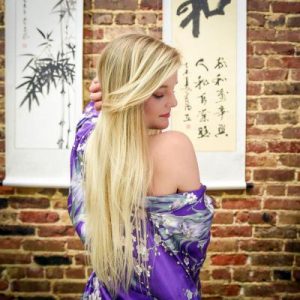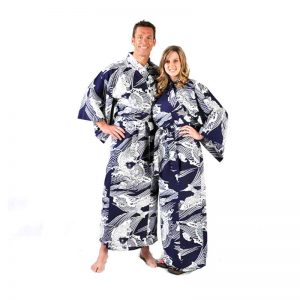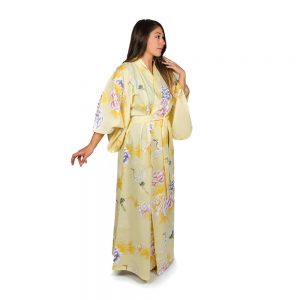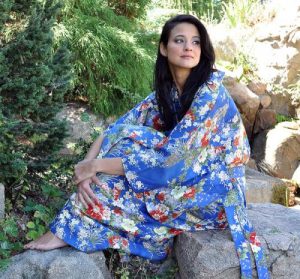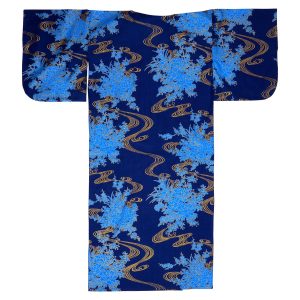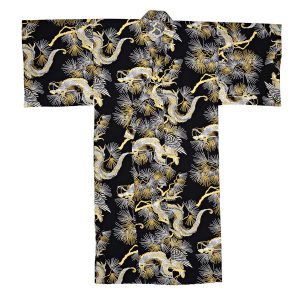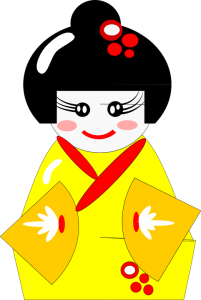When you think of Japanese bathrobes—better known as kimonos and yukata—they may conjure images of tea ceremonies, festivals, or traditional gatherings. However, these iconic garments transcend their cultural origins and have seamlessly become a staple for modern loungewear enthusiasts. Whether it’s unwinding at home or indulging in a spa day, both kimono and yukata offer an unparalleled blend of craftsmanship, comfort, and understated elegance.
At Chopa, we’ve spent nearly three decades celebrating and redefining this tradition, making it easier than ever for customers to find their perfect Japanese bathrobe.
What is the Difference Between a Kimono and Yukata?
Before exploring their versatility, it’s essential to understand what sets these two garments apart.
- Kimono represents sophistication and heritage. Typically made from high-quality cotton fabrics, and silk, kimonos are traditionally reserved for festive or ceremonial occasions. Modern adaptations, however, can be styled for fashion or as a luxurious robe for home use.
- Yukata is the casual sibling of the kimono. Made of lightweight cotton or synthetic fabrics, it’s perfect for summer festivals and is widely embraced in Japan as the ultimate loungewear. Men’s yukata, in particular, often feature more subdued and understated patterns, while women’s yukata blend soft fabrics with elegant designs.
Chopa’s expertly curated collection honors these distinctions while creating pieces crafted for everyday enjoyment.
Yukata – The Ultimate Loungewear and Modern Bathrobe
Imagine slipping into your favorite yukata after a long day—it’s not just clothing, it’s an experience. With its breathable cotton, lightweight drape, and irresistibly soft touch, a yukata rivals even the most luxurious bathrobes. It’s little wonder that Japanophiles and comfort seekers alike have embraced yukata as a must-have for unwinding at home.
- Perfect for Lounging
The relaxed fit of yukata allows you to move freely without feeling restricted, while its thoughtful design ensures you’re enveloped in comfort. Whether binge-watching your favorite series, enjoying your morning coffee, or reading on the porch, a yukata makes every moment special.
- Spa Vibes, Anywhere
Transport yourself to a serene Japanese onsen. Yukata is commonly worn in traditional Japanese hot-spring towns, and now you can replicate that indulgent feeling in your very own bathroom. Soft, below-the-knee designs pair function with elegance, making them your go-to robe after a rejuvenating shower or bath.
Why Kimonos are More than Just Tradition
While yukata excels in casual luxury, modern-day kimono-yukata garments have also taken on new versatility. They’re gracing fashion runways, functioning as stylish outerwear, and becoming a unique gift option for loved ones looking to incorporate Japanese culture into their everyday lives.
Whether dressed up or dressed down, kimonos serve as a wearable art form that celebrates tradition without sacrificing modernity. At Chopa, we ensure our offering includes timeless pieces as well as contemporary designs to suit every preference.
Thoughtfully Designed with Craftsmanship in Mind
Each Japanese bathrobe we supply is more than just fabric—it’s a reflection of cultural heritage combined with meticulous artisanship. Some defining features of our kimonos and yukata include:
- Exclusive Patterns
Our garments showcase vibrant influences from traditional Asian block prints to minimal, modern patterns. Every design honors Japan’s legacy while adapting to today’s tastes.
- Sustainable Comfort
Crafted with soft jersey-knit organic cotton, our yukata and happi coats marry eco-conscious dyeing techniques with indulgent comfort.
- Refined Details
Every seam, crease, and fold is assembled with precision so you can enjoy a garment that fits like it was made just for you.
Why Chopa is the Ultimate Online Kimono Shop
Since 1994, Chopa has been a trusted name and a leading online provider of authentic Japanese kimonos, yukata, and happi coats. We take the guesswork out of online kimono shopping by offering:
- Vast Selection – Our collection features a range of designs suited for every occasion, from traditional styles to everyday wear.
- Fast Shipping – Based right in the USA, Chopa ensures quick delivery to your door so you can start enjoying your Japanese bathrobe without delay.
- Exceptional Customer Service – Whether you’re new to kimonos or an experienced shopper, our team is ready to help you find the perfect piece.
Explore the Elegance of Kimono, Yukata, and Happi Coats Today!
Whether you’re looking to add a touch of Japanese style to your home loungewear or seeking a stunning gift for a loved one, Chopa is here to guide you. From men’s yukata to elegant kimono-yukata hybrids and happi coats, we’ve crafted a collection that reflects the traditions of the past while serving the comforts of today.
Step into the beauty of tradition—your perfect Japanese bathrobe awaits. Visit Chopa now to explore.



